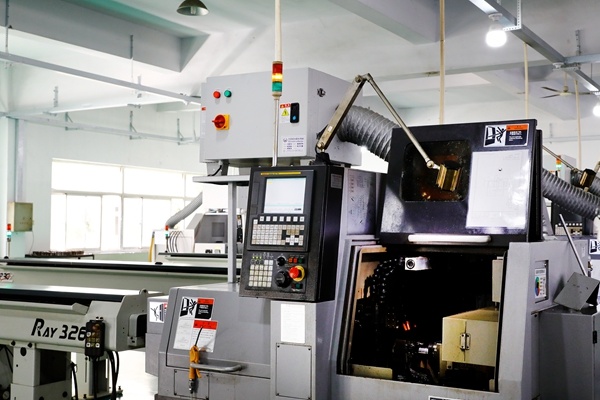Mastering the Art of Small Precision Parts Manufacturing: Insights for Professionals
Release Time:
Jun 02,2025
In the highly specialized field of small precision parts manufacturing, the ability to produce intricate components with exacting standards is critical. These components are essential in various industries, including aerospace, automotive, medical devices, and electronics. Understanding the nuances of this manufacturing process is vital for professionals aiming to enhance production quality and me
In the highly specialized field of small precision parts manufacturing, the ability to produce intricate components with exacting standards is critical. These components are essential in various industries, including aerospace, automotive, medical devices, and electronics. Understanding the nuances of this manufacturing process is vital for professionals aiming to enhance production quality and meet stringent industry specifications.
Small precision parts are unique due to their size and the detailed functionality they must fulfill. The manufacturing process often involves advanced techniques such as CNC (Computer Numerical Control) machining, which allows for the automated production of high-precision components with minimal human intervention. This technology not only increases efficiency but also significantly reduces the likelihood of error, resulting in higher-quality products.
Another critical aspect of small precision parts manufacturing is the choice of materials. Various materials, ranging from metals like titanium and stainless steel to plastics and composites, can be utilized based on the application's requirements. Each material offers different properties, such as strength, durability, and resistance to corrosion, which must be carefully considered during the design phase.
Quality control is paramount in this industry. The implementation of rigorous testing procedures ensures that each component meets the specified tolerances and performance criteria. Techniques such as laser scanning and coordinate measuring machines (CMM) are often employed to verify the precision of manufactured parts. Additionally, adhering to industry standards such as ISO certifications can further reinforce a manufacturer’s commitment to quality.
Innovation plays a significant role in enhancing the capabilities of small precision parts manufacturing. Technologies such as additive manufacturing, or 3D printing, are emerging as viable alternatives for producing complex geometries that were previously challenging to achieve. This approach not only reduces waste but also allows for rapid prototyping, enabling engineers to iterate designs quickly.
Collaboration between engineers and manufacturers is essential for optimizing the design and production processes. By engaging in a continuous feedback loop, both parties can identify potential issues early in the design phase, ultimately leading to a more efficient manufacturing process.
In conclusion, small precision parts manufacturing is a complex yet rewarding field that requires a deep understanding of technology, materials, and quality assurance practices. As industries increasingly demand higher precision and efficiency, professionals in this area must stay informed about the latest advancements and best practices to remain competitive. Embracing innovation, prioritizing quality, and fostering collaboration will ensure success in the evolving landscape of precision manufacturing.
Small precision parts are unique due to their size and the detailed functionality they must fulfill. The manufacturing process often involves advanced techniques such as CNC (Computer Numerical Control) machining, which allows for the automated production of high-precision components with minimal human intervention. This technology not only increases efficiency but also significantly reduces the likelihood of error, resulting in higher-quality products.
Another critical aspect of small precision parts manufacturing is the choice of materials. Various materials, ranging from metals like titanium and stainless steel to plastics and composites, can be utilized based on the application's requirements. Each material offers different properties, such as strength, durability, and resistance to corrosion, which must be carefully considered during the design phase.
Quality control is paramount in this industry. The implementation of rigorous testing procedures ensures that each component meets the specified tolerances and performance criteria. Techniques such as laser scanning and coordinate measuring machines (CMM) are often employed to verify the precision of manufactured parts. Additionally, adhering to industry standards such as ISO certifications can further reinforce a manufacturer’s commitment to quality.
Innovation plays a significant role in enhancing the capabilities of small precision parts manufacturing. Technologies such as additive manufacturing, or 3D printing, are emerging as viable alternatives for producing complex geometries that were previously challenging to achieve. This approach not only reduces waste but also allows for rapid prototyping, enabling engineers to iterate designs quickly.
Collaboration between engineers and manufacturers is essential for optimizing the design and production processes. By engaging in a continuous feedback loop, both parties can identify potential issues early in the design phase, ultimately leading to a more efficient manufacturing process.
In conclusion, small precision parts manufacturing is a complex yet rewarding field that requires a deep understanding of technology, materials, and quality assurance practices. As industries increasingly demand higher precision and efficiency, professionals in this area must stay informed about the latest advancements and best practices to remain competitive. Embracing innovation, prioritizing quality, and fostering collaboration will ensure success in the evolving landscape of precision manufacturing.




